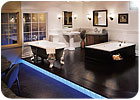
A disturbing new trend was first identified in a respected industry forecast more than a dozen years ago. The report found that up to 25% of homeowners planning a kitchen or bath remodel did not complete the project. This finding was based on extensive research with 20,000 consumers. Whether confused by the vast array of products, frustrated by the complexity of the project, unable to find a contractor, or lacking confidence in the retailers they visited, 3-4 million homeowners each year decide to remain content with the old kitchens and baths that stimulated them to remodel in the first place.
Homeowners who actually invest in a new kitchen or bath are proving to be more elusive than ever before. Determining what influences today’s consumers - who are starved for time, bombarded with marketing messages and highly distrustful of businesses - has become a complex equation.
A set of different, but equally challenging selling conditions exists with designers, architects, remodeling contractors and other trade specifiers. These professionals, armed with seemingly unlimited information on the Internet, have become self-professed product experts.
Those same Internet channels provide a multitude of local showroom names, through search engines or manufacturer sites with dealer locators. Additionally, an increasing number of online decorative plumbing e-tailors, with no showroom and little consultative service, are happy to serve the role of low-cost provider.
The Role Of Brands
Branding, once focused primarily on products, names, logos and symbols, has evolved considerably in the past decade. Today’s most successful brands - including retail operations - engage people, help define aspirations and establish expectations for the experience customers can expect from a company.In today’s market, your company’s brand is one of your most valuable assets. It defines who you are, what you stand for, what distinguishes your company and why someone should do business with you.
Now more than ever before, it’s vital to identify and consistently communicate the identity of your brand.
Your Brand
In years past, showroom branding mostly consisted of taking advantage of some co-op dollars to run a full-page ad featuring a plumbing manufacturer in a local magazine. Today, connecting with potential customers on a personal level requires that you reach beyond products to create an emotional appeal. Your showroom’s unique heritage, skills, services and atmosphere distinguish your business and appeal to potential customers. For example:Has your company been in business for a significant number of years? Are you a family-owned company? Do you specialize in a particular type of project? Does your showroom have working shower displays? Do you belong to a national buying group or trade association? Do you have bath designers on staff? Do you offer installation service? Have you won any awards recently? Do you support local events?Any of these examples tell a distinctive personal story about your showroom that captures attention, calms uncertainty and gains confidence - all important first steps in appealing to consumers and specifiers.Key buying motivators changed considerably in the past decade. Lifestyle segments, personal philosophies, aspirations and psychographics have replaced demographics, income, age and need.
While previous generations bought out of need, for maintenance/repair or to improve their social class, today’s consumers buy for self-actualization. They identify with brands and experiences that express their individuality. Purchasing decisions are influenced by the perception that a product or showroom is uniquely suited to their individual needs and style.
Value Of A Brand
Building and communicating your brand message can have significant rewards.Well-established brand positioning distinguishes you from your competition and builds familiarity, soothing the fears and uncertainty of your potential customers.
Establishing your brand builds trust that closes sales, attracts prestigious projects, enables you to get higher margins and stimulates growth quickly and profitably.
A strong brand can speed referrals and closings, build more equity in your business, attract high caliber employees and help ensure a steady flow of the right kind of customers.

Getting Started
By literal definition, the communication of your brand includes every interaction a customer has with your company, from how your phone is answered and the impression your Web site creates, to the atmosphere of your showroom and the appearance of your delivery trucks.You and your team will want to review every point of customer contact with your showroom and evaluate how effectively it communicates your brand positioning.
Two key first steps to branding your showroom are the creation of your positioning story and a strategic marketing plan.
The positioning story typically runs a single page, formatted as a “Who We Are and What We Do” statement. Key elements include significant company heritage, specialized skills and services, featured product categories and key words and phrases describing your showroom.
Your strategic marketing plan should include market channel priorities, an analysis of current marketing efforts, a competitive overview, future growth goals and detailed strategies, with goals/objectives, specific tactics, action plans and budgets.
The next article in this series will discuss the positioning story and strategic marketing plan in greater detail. Contact me directly if you’d like a free copy of our Branding Workbook, a guideline for creating a strategic marketing plan for your showroom.
